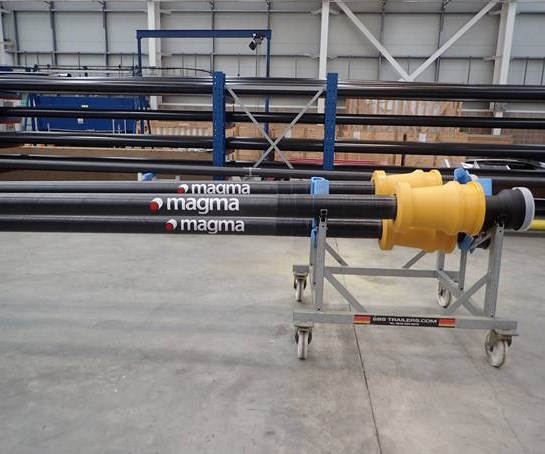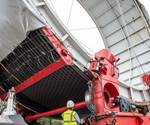Magma m-pipe chosen for Gulf of Mexico flowline intervention
Magma Global’s carbon fiber/PEEK m-pipe subsea jumpers will be used by C-Innovation for remediation of suspected subsea pipe blockage.

Source | Magma Global
(Portsmouth, U.K.) announced on Dec. 17 that it has been selected by (Mandeville, La., U.S.) ​to supply m-pipe thermoplastic composite subsea jumpers for flowline intervention in the Gulf of Mexico. The 4-inch diameter, 10 ksi m-pipes are expected to be deployed in the next few months.
C-Innovation is planning to perform a remediation of suspected blockage or restriction in a subsea production system using Flexi-Coil. The work will be performed in water depths of up to 6,500 feet on different assets within the Gulf of Mexico. It will involve lowering a drill pipe riser through the moonpool of an offshore support vessel then connecting to subsea infrastructure using the m-pipe jumpers in a free-hanging steep wave configuration. The Flexi-Coil will be run down the drill pipe riser, through the m-pipe jumper and into the production flowline.
m-pipe is a thermoplastic composite pipe (TCP) that is made from polyetheretherketone (PEEK) and carbon fiber lasered together to form a continuous, bonded flexible pipe. The construction produces a jumper that is lightweight, strong and with high bend strain capacity. In addition, it does not corrode in seawater and has superior resistance against a wide range of oilfield chemicals. The flexible m-pipe jumper will remove heave from the vessel and provide a smooth pathway to ease Flexi-Coil access.
“This deployment marks a first for Magma in the Gulf of Mexico. We are seeing a rapid rise in the number of contractors looking to exploit m-pipe as it is increasingly accepted that TCP is the future for the oil and gas industry,” says Charles Tavner, chief operating officer at Magma Global.
Related Content
-
Plant tour: Daher Shap’in TechCenter and composites production plant, Saint-Aignan-de-Grandlieu, France
Co-located R&D and production advance OOA thermosets, thermoplastics, welding, recycling and digital technologies for faster processing and certification of lighter, more sustainable composites.
-
MFFD longitudinal seams welded, world's largest CFRTP fuselage successfully completed
Fraunhofer IFAM and partners have completed left and right welds connecting the upper and lower fuselage halves and sent the 8×4-meter full-scale section to ZAL for integration with a cabin crown module and testing.
-
Plant tour: Airbus, Illescas, Spain
Airbus’ Illescas facility, featuring highly automated composites processes for the A350 lower wing cover and one-piece Section 19 fuselage barrels, works toward production ramp-ups and next-generation aircraft.
.jpg;width=70;height=70;mode=crop)





